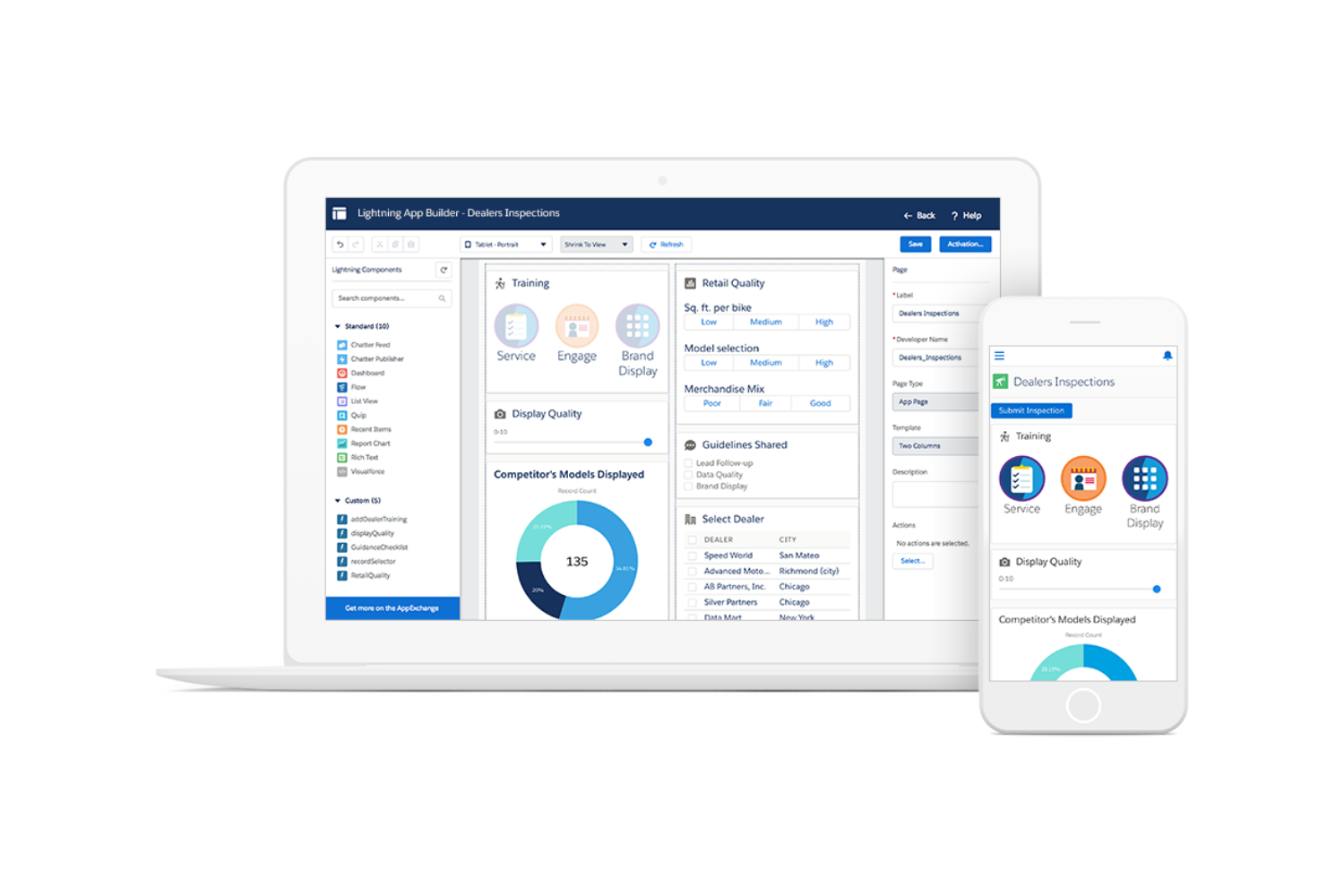Introduction
Welcome to the world of SaaS Operations! In today’s fast-paced digital landscape, businesses are increasingly turning to Software-as-a-Service (SaaS) solutions to streamline their operations and drive growth. SaaS Operations, also known as SaaSOps, plays a crucial role in managing and optimizing these SaaS applications. It encompasses a range of activities, tools, and processes that ensure the smooth operation and effective utilization of SaaS tools within an organization.
At its core, SaaS Operations focuses on enhancing the efficiency, scalability, and security of SaaS applications. It involves managing the entire lifecycle of SaaS tools, from deployment and integration to monitoring and ongoing maintenance. SaaS Operations teams work closely with both IT and business stakeholders to align SaaS usage with organizational goals and drive maximum value from these cloud-based solutions.
SaaS Operations is more than just managing subscriptions and user access. It encompasses a holistic approach to optimize SaaS application usage throughout an organization. By leveraging the power of automation, analytics, and streamlined processes, SaaS Operations drives operational efficiency, cost savings, and improved collaboration.
In this article, we will delve into the world of SaaS Operations, exploring its definition, benefits, key components, best practices, and common challenges. Whether you’re new to SaaS Operations or looking to enhance your existing practices, this article will provide you with the insights and knowledge to optimize this critical aspect of your business operations.
Definition of SaaS Operations
SaaS Operations, also known as SaaSOps, refers to the discipline and set of practices that focus on managing and optimizing the usage of Software-as-a-Service (SaaS) applications within an organization. It involves the implementation of strategies, tools, and processes to ensure the efficient deployment, integration, monitoring, and maintenance of SaaS tools.
Unlike traditional software, where applications are installed and maintained on-premises, SaaS applications are cloud-based and accessed through the internet. SaaS Operations provide businesses with the means to maximize the benefits of these cloud-based solutions.
At its core, SaaS Operations aims to streamline the adoption, utilization, and management of SaaS applications to drive operational efficiency, improve collaboration, and achieve organizational goals. It encompasses a wide range of activities, including provisioning and deprovisioning user access, managing SaaS licenses, monitoring application performance and usage, and ensuring data security and compliance.
SaaS Operations teams work closely with various stakeholders, including IT, operations, finance, and business units, to align SaaS tools with organizational objectives. By managing the entire lifecycle of SaaS applications, from initial deployment to ongoing maintenance, SaaS Operations teams ensure that these tools deliver value and meet the evolving needs of the organization.
Key aspects of SaaS Operations include:
- Governance: Establishing policies and guidelines for SaaS application usage, ensuring compliance, and managing user access and permissions.
- Integration: Integrating SaaS applications with existing IT systems and workflows to facilitate seamless data flow and process automation.
- Monitoring and Analytics: Continuously monitoring application performance, usage, and security to identify and address issues proactively. Analyzing data to gain insights and optimize SaaS application utilization.
- Automation: Implementing automated processes and workflows to streamline provisioning, user access management, and other repetitive tasks, reducing manual effort and errors.
- Vendor Management: Managing relationships with SaaS vendors, evaluating and selecting new applications, negotiating contracts, and optimizing licensing and costs.
Overall, SaaS Operations plays a fundamental role in effectively managing and optimizing the use of SaaS applications within organizations, ensuring a smooth and efficient experience for both IT teams and end-users.
Benefits of SaaS Operations
SaaS Operations brings numerous benefits to organizations that leverage SaaS applications. By implementing effective SaaS Operations practices, businesses can optimize their usage of these cloud-based tools and drive various advantages. Here are some key benefits of SaaS Operations:
1. Enhanced Efficiency: SaaS Operations streamlines the deployment, integration, and maintenance of SaaS applications, enabling organizations to operate more efficiently. By automating tasks, managing user access, and optimizing workflows, SaaS Operations reduces manual effort and ensures smooth application functionality, allowing teams to focus on core business activities.
2. Cost Savings: SaaS Operations helps organizations minimize costs associated with SaaS application usage. By actively monitoring application performance and usage, SaaS Operations teams can identify unused or underutilized licenses and take necessary actions, such as reallocating licenses or discontinuing subscriptions, to optimize costs and reduce wastage.
3. Improved Collaboration: SaaS applications are designed to facilitate collaboration and remote work. SaaS Operations ensures that these tools are integrated seamlessly into existing workflows and provide a consistent experience across different teams and departments. By enabling effective collaboration through SaaS apps, organizations can enhance teamwork, communication, and productivity.
4. Scalability and Flexibility: SaaS Operations enables organizations to scale their SaaS application usage as their needs evolve. Whether it’s adding or removing users, provisioning new applications, or adjusting licenses, SaaS Operations provides the flexibility to adapt SaaS tools to changing business requirements. This scalability allows organizations to align their SaaS usage with their growth strategies effectively.
5. Data Security and Compliance: SaaS Operations focuses on ensuring the security and compliance of SaaS applications. Through robust access controls, data encryption, and regular monitoring, SaaS Operations teams protect sensitive information and maintain compliance with industry regulations. By implementing rigorous security measures, businesses can mitigate the risks associated with cloud-based applications.
6. Enhanced User Experience: SaaS Operations aims to provide a seamless and positive user experience for employees using SaaS applications. By managing user access, troubleshooting issues, and providing timely support, SaaS Operations teams ensure that users can maximize the benefits of these tools and improve their overall productivity.
By leveraging these benefits, organizations can unlock the full potential of SaaS applications and gain a competitive edge in the rapidly evolving digital landscape.
Key Components of SaaS Operations
SaaS Operations comprises several key components that work together to ensure the effective management and optimization of SaaS applications within an organization. These components provide a framework for SaaS Operations teams to streamline processes, enhance performance, and drive value from SaaS tools. Let’s explore the key components of SaaS Operations:
1. Governance and Compliance: This component focuses on establishing policies, guidelines, and controls to govern the usage of SaaS applications. It includes defining user access levels, setting data security and privacy protocols, and ensuring compliance with industry regulations. By implementing effective governance practices, organizations can mitigate risks and maintain data integrity throughout their SaaS environment.
2. Integration and Interoperability: Integration plays a crucial role in SaaS Operations, enabling the seamless flow of data between SaaS applications and existing IT systems. This component involves integrating SaaS applications with other tools and platforms to optimize workflows, automate processes, and enhance collaboration. Integration ensures that SaaS applications work cohesively within the organization’s technology ecosystem.
3. Application Deployment and Management: This component focuses on the process of deploying and managing SaaS applications within the organization. It includes tasks such as provisioning new applications, configuring settings, managing licenses, and overseeing updates and patches. SaaS Operations teams handle the operational aspects of SaaS application management, ensuring smooth deployment and ongoing maintenance.
4. Monitoring and Performance Optimization: Monitoring and optimizing the performance of SaaS applications is essential for ensuring their efficient usage. This component involves real-time monitoring of application performance, analyzing usage data, and identifying areas for improvement. By proactively monitoring performance metrics and making necessary adjustments, organizations can enhance the user experience and optimize resource utilization.
5. User Access and Security: Managing user access and ensuring data security are crucial components of SaaS Operations. This involves controlling user permissions, enforcing multi-factor authentication, and monitoring user activity to prevent unauthorized access. By implementing robust security measures, organizations can safeguard sensitive data and protect against potential security breaches.
6. Vendor and Contract Management: Managing relationships with SaaS vendors and optimizing licensing and contracts is an integral part of SaaS Operations. This component involves evaluating vendor offerings, negotiating contracts, and tracking license usage and costs. Effective vendor management enables organizations to maximize the value they derive from SaaS applications while managing costs efficiently.
By considering and implementing these key components, organizations can establish a solid foundation for their SaaS Operations, enabling them to effectively manage and optimize their SaaS application ecosystem.
How SaaS Operations Improves Efficiency
SaaS Operations plays a vital role in improving operational efficiency within organizations by streamlining processes, automating tasks, and optimizing the utilization of SaaS applications. Let’s explore how SaaS Operations achieves this:
1. Automation of Routine Tasks: SaaS Operations teams leverage automation tools to streamline repetitive tasks such as user provisioning, license management, and data backups. By automating these processes, organizations can reduce manual effort, eliminate errors, and ensure consistent and efficient execution, allowing teams to focus on more strategic activities.
2. Centralized Management: SaaS Operations provides a centralized platform or system to manage all SaaS applications within an organization. This enables IT teams to have a holistic view of the entire SaaS landscape, making it easier to track usage, monitor performance, and manage licenses. Centralized management saves time and effort by eliminating the need to navigate multiple application interfaces.
3. Improved Collaboration and Communication: SaaS applications are designed to facilitate collaboration and communication among teams. SaaS Operations ensures that these applications are integrated seamlessly into the organization’s workflows and processes. By providing a unified platform for collaboration, SaaS Operations enhances team productivity, enables real-time information sharing, and eliminates silos.
4. Resource Optimization: SaaS Operations enables organizations to optimize resource allocation and utilization. Through monitoring and analytics, SaaS Operations teams can identify underutilized licenses, identify opportunities to consolidate applications, and allocate resources based on actual usage patterns. This optimization helps organizations reduce costs and eliminate waste.
5. Rapid Deployment and Scaling: SaaS Operations allows for quick and seamless deployment of new SaaS applications. IT teams can easily provision and configure new applications, ensuring that they are up and running quickly. Additionally, as business needs evolve, SaaS Operations enables organizations to scale their usage of SaaS applications, quickly adding or removing licenses and adjusting resources as required.
6. Enhanced User Experience: SaaS Operations focuses on providing a seamless and user-friendly experience for employees using SaaS applications. By ensuring smooth onboarding, managing user access and permissions, and providing timely support, SaaS Operations teams enable users to maximize the benefits of these tools and improve their overall efficiency and satisfaction.
By leveraging these strategies and practices, SaaS Operations significantly enhances operational efficiency within organizations. It streamlines processes, optimizes resource utilization, and empowers teams to work collaboratively and effectively, ultimately driving organizational success.
SaaS Operations Best Practices
Implementing SaaS Operations best practices is essential for organizations to effectively manage and optimize their SaaS application environment. By following these practices, businesses can enhance efficiency, improve security, and drive maximum value from their SaaS investments. Here are some key SaaS Operations best practices:
1. Establish Clear Governance Policies: Define clear policies and guidelines for SaaS application usage, including data access, security protocols, and user permissions. Regularly review and update these policies to align with changing business needs and industry regulations.
2. Implement Robust Security Measures: Ensure data security by implementing best-in-class security measures, including encryption, multi-factor authentication, and regular vulnerability assessments. Continuously monitor and address security threats to protect sensitive information.
3. Centralize SaaS Application Management: Utilize a centralized platform or system to monitor and manage all SaaS applications within the organization. This provides a holistic view of the SaaS landscape, simplifies administration, and enables better resource allocation.
4. Regularly Review SaaS Application Portfolio: Assess the effectiveness and usage of each SaaS application on a regular basis. Identify underutilized applications and evaluate whether they are still providing value to the organization. Consider consolidating applications to reduce costs and streamline workflows.
5. Continuously Monitor Performance and User Experience: Proactively monitor application performance and user experience to identify and address any issues. Collect and analyze data on application usage and adoption to gain insights and make informed decisions for improvement.
6. Foster Collaboration and Training: Encourage collaboration and provide comprehensive training for employees on using SaaS applications effectively. Foster a culture of continuous learning and provide ongoing support and resources for employees to maximize the benefits of SaaS tools.
7. Regularly Backup and Test Data: Implement regular data backup procedures for SaaS applications to prevent data loss. Test the data recovery process periodically to ensure its effectiveness and reliability.
8. Stay Up-to-Date with SaaS Industry Trends: Continuously educate yourself about the evolving landscape of SaaS applications and associated technologies. Stay informed about new features, updates, and innovations to effectively leverage SaaS tools for business growth.
9. Foster Collaboration Between IT and Business Teams: Encourage cross-departmental collaboration between IT and business teams to align SaaS usage with organizational objectives. Regularly communicate and assess the needs of different departments to ensure that SaaS applications support their specific requirements.
10. Regularly Train and Certify SaaS Operations Teams: Invest in training and certifications for SaaS Operations teams to stay updated with the latest practices and technologies. This enables them to effectively manage and optimize SaaS applications within the organization.
By adhering to these best practices, organizations can establish a strong foundation for their SaaS Operations, ensuring seamless management and optimization of SaaS applications to drive business success.
Common Challenges in SaaS Operations
While SaaS Operations brings numerous benefits, it also presents certain challenges that organizations need to address. Being aware of these challenges allows businesses to plan ahead and implement strategies to overcome them. Here are some common challenges in SaaS Operations:
1. Shadow IT and Application Sprawl: Shadow IT refers to the unauthorized use of SaaS applications within an organization. Without proper visibility and control, employees may subscribe to SaaS applications without IT’s knowledge, leading to application sprawl. This can result in security vulnerabilities, redundant applications, and increased costs.
2. Integration Complexity: Integrating SaaS applications with existing IT systems and workflows can be complex. Integration challenges, such as incompatible data formats and limited integration capabilities of certain applications, can arise. These complexities can hinder data flow, process automation, and seamless collaboration across applications.
3. Data Security and Compliance: Ensuring data security and compliance in the SaaS environment is crucial but challenging. Organizations need to protect sensitive data, enforce access controls, and comply with industry regulations. The distributed nature of cloud-based applications adds complexity to data security efforts.
4. Vendor Management: Managing relationships with multiple SaaS vendors can be a challenge. It involves evaluating vendor offerings, negotiating contracts, and tracking licenses and costs. Without proper vendor management, businesses may face challenges with contract renewals, scaling licenses, or resolving vendor-related issues.
5. User Adoption and Training: SaaS applications may require proper user adoption and training to ensure their effective utilization. Resistance to change, lack of awareness, and insufficient training can hinder user adoption and limit the potential benefits of SaaS applications.
6. Data Migration and Vendor Lock-In: Moving data from legacy systems to SaaS applications can present challenges. Data migration processes need to be carefully planned and executed to ensure data integrity and minimize disruptions. Additionally, organizations need to consider the risk of vendor lock-in and plan exit strategies to avoid dependency on a single vendor.
7. Performance Monitoring and Scalability: Monitoring the performance of SaaS applications and ensuring scalability can be challenging. Organizations need to analyze performance metrics, identify bottlenecks, and scale resources as needed to maintain optimal application performance, especially during peak usage periods.
8. Evolving SaaS Landscape: The SaaS landscape is constantly evolving, with new applications, features, and updates being released regularly. Staying up-to-date with these changes and assessing their impact on the organization can be a challenge. Businesses need to continuously evaluate and adopt new tools and technologies to stay competitive.
9. Technical Support and Issue Resolution: In the event of technical issues or disruptions in SaaS applications, timely support and issue resolution become crucial. Relying on external vendors for technical support can sometimes result in delays, affecting business operations and user experience.
10. Cost Optimization: Optimizing SaaS costs can be a challenge due to factors like unpredictable user demand, over-licensing, or fluctuating subscription pricing. Organizations need to continuously monitor usage, manage licenses effectively, and negotiate contracts to optimize costs and maximize ROI.
By proactively addressing these challenges, organizations can ensure a smooth and successful SaaS Operations implementation, maximizing the benefits and efficiency of their SaaS application environment.
Conclusion
SaaS Operations, the discipline of managing and optimizing SaaS applications, is a crucial component of modern business operations. By implementing effective SaaS Operations practices, organizations can streamline processes, enhance efficiency, and drive value from their SaaS investments.
In this article, we explored the definition of SaaS Operations and its key components. We discussed the benefits of SaaS Operations, including enhanced efficiency, cost savings, improved collaboration, scalability, data security, and an enhanced user experience.
We also highlighted some best practices in SaaS Operations, such as establishing clear governance policies, implementing robust security measures, centralizing application management, and fostering collaboration between IT and business teams.
However, it’s important to be aware of the common challenges in SaaS Operations, such as shadow IT, integration complexity, data security, vendor management, user adoption, and technical support. By addressing these challenges, organizations can effectively navigate the SaaS landscape and maximize the benefits of their SaaS applications.
In conclusion, SaaS Operations plays a critical role in managing and optimizing SaaS applications within organizations. By implementing the best practices mentioned and effectively overcoming the associated challenges, businesses can leverage the power of SaaS applications to drive operational efficiency, enhance collaboration, and achieve their organizational goals.

























